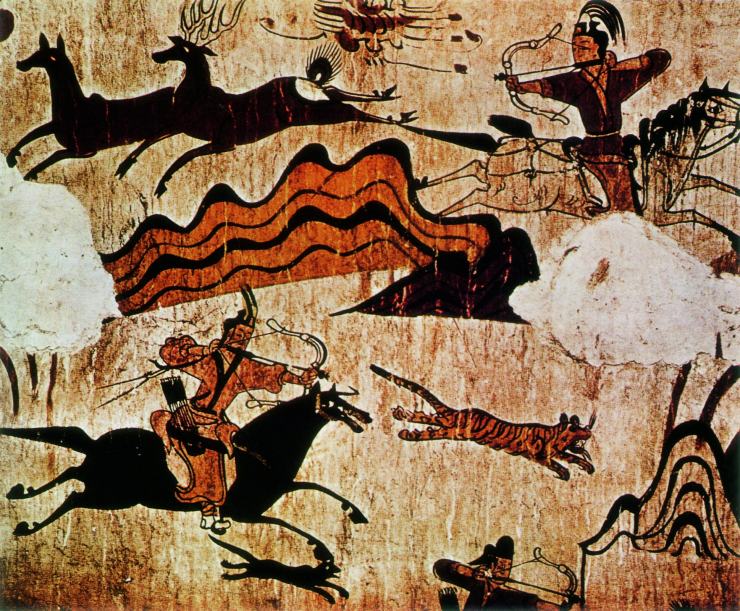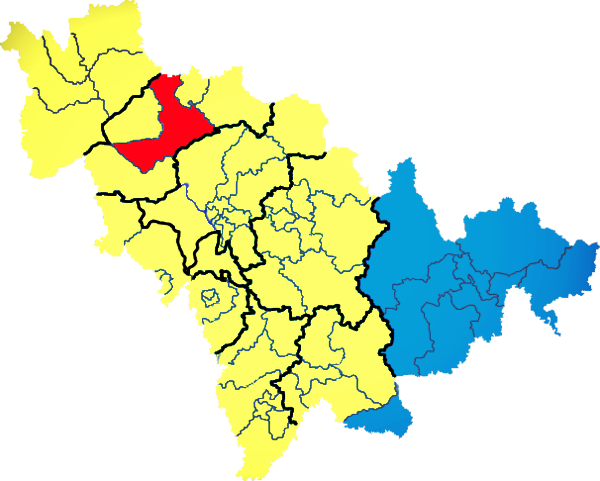|
Hwando
Hwando () is a mountain fortress of the ancient Korean kingdom of Goguryeo, built to protect Goguryeo's second capital, Gungnae. It is located in present-day Ji'an city of the province of Jilin, China. The fortress is located 2.5 km west of Ji'an, Jilin province in Northeast China, near the North Korean border. It is part of the UNESCO World Heritage Site Capital Cities and Tombs of the Ancient Koguryo Kingdom, together with nearby Gungnae City and the Ohnyeosan City, because of its historical importance and exceptional architecture. History In 3 CE, King Yuri of Goguryeo moved the capital to Gungnae Fortress, and built the Wina Rock fortress. (page 18) of Samguk Sagi [...More Info...] [...Related Items...] OR: [Wikipedia] [Google] [Baidu] |
Goguryeo–Wei War
The Goguryeo–Wei War was a series of invasions of Goguryeo from 244 to 245 launched by Cao Wei. The invasions, a retaliation against a Goguryeo raid in 242, destroyed the Goguryeo capital of Hwando, sent its king fleeing, and broke the tributary relationships between Goguryeo and the other tribes of the Korean Peninsula that formed much of Goguryeo's economy.Gardiner 1969 : 34. Although the king evaded capture and would go on to settle in a new capital, Goguryeo was greatly diminished for a time, and would spend the next half century rebuilding its ruling structure and regaining control over its people, unmentioned by the Chinese historical texts.Byington 2007 : 93. By the time Goguryeo reappeared in Chinese annals, the state had evolved into a much more powerful political entity—thus the Wei invasion was identified by historians as a watershed moment in Goguryeo history that divided the different stages of Goguryeo's growth. In addition, the second campaign of the war includ ... [...More Info...] [...Related Items...] OR: [Wikipedia] [Google] [Baidu] |
Goguryeo
Goguryeo (37 BC – 668 AD) (; ; Old Korean: Guryeo) also later known as Goryeo (; ; Middle Korean: 고ᇢ롕〮, ''kwòwlyéy''), was a Korean kingdom which was located on the northern and central parts of the Korea, Korean Peninsula and the southern and central parts of modern-day Northeast China (Manchuria). At its peak of power, Goguryeo encompassed most of the Korean Peninsula and large parts of Manchuria, along with parts of eastern Mongolia, Inner Mongolia, and modern-day Russia. Along with Baekje and Silla, Goguryeo was one of the Three Kingdoms of Korea. It was an active participant in the power struggle for control of the Korean peninsula and was also associated with the foreign affairs of neighboring polities in China and Yamato period, Japan. Goguryeo was one of the great powers in East Asia until its defeat by a Silla–Tang alliance in 668 after prolonged exhaustion and internal strife following the death of Yeon Gaesomun. After its fall, its territory was ... [...More Info...] [...Related Items...] OR: [Wikipedia] [Google] [Baidu] |
Ji'an, Jilin
Ji'an (; formerly ) is a county-level city in the southwestern part of Jilin province, People's Republic of China. It is administered by the prefecture-level city of Tonghua and is the southernmost county-level division in the province. Ji'an has an area of and a population of approximately 230,000. The city was given its current status in 1988. Ji'an is separated from Manpo, Chagang Province, North Korea by the Yalu River; it has an international border running . History Archaeological excavations in the Ji'an area have unearthed several Yemaek sites along the Amnok River and its tributary the Hunjiang, which belong to the regional Neolithic and Bronze ages. After the fall of Wiman Joseon to the Han dynasty in 108 BCE, Ji'an was part of Goguryeo County under the administration of Xuantu Commandery. In 3 CE, the second ruler of Goguryeo, King Yuri, moved the state's capital to Gungnae (modern Ji'an) and established the mountain fortress Hwando nearby to defend it. ... [...More Info...] [...Related Items...] OR: [Wikipedia] [Google] [Baidu] |
Capital Cities And Tombs Of The Ancient Koguryo Kingdom
The Capital Cities and Tombs of the Ancient Koguryo Kingdom is an UNESCO World Heritage Site which includes a number of archaeological sites currently in Ji'an, Jilin Province and Huanren, Liaoning Province in Northeast China. Goguryeo (or Koguryo, "Gaogouli" in Chinese), (37 BCE – 668 CE) was a Korean Kingdom located in the northern and central parts of the Korean Peninsula and the southern and central parts of Manchuria. The archaeological sites were collectively designated a cultural World Heritage Site in 2004, qualifying as such under the first five of the six criteria for cultural heritage sites. The designation includes the archaeological remains of three fortress-cities: Wunü Mountain City, Gungnae and Hwando, and forty identified tombs of Goguryeo imperial and noble families. In 2010, the Chinese government established the Ji'an Gaogouli National Archaeological Park (), which includes all of the Goguryeo World Heritage Sites in Ji'an and Jilin, but not the ones ... [...More Info...] [...Related Items...] OR: [Wikipedia] [Google] [Baidu] |
Jilin
) , image_skyline = Changbaishan Tianchi from western rim.jpg , image_alt = , image_caption = View of Heaven Lake , image_map = Jilin in China (+all claims hatched).svg , mapsize = 275px , map_alt = Map showing the location of Jilin Province , map_caption = Map showing the location of Jilin Province , coordinates = , subdivision_type = Country , subdivision_name = China , named_for = from ''girin ula'', a Manchu language, Manchu phrase meaning "along the river" , seat_type = Capital , seat = , seat1_type = , seat1 = , parts_type = Divisions , parts_style = para , p1 = 9 Prefectures of China, prefectures , p2 = 60 Counties of China, counties , p3 = 1006 Townships of China, townships , government_type = Provinces of China, Province , governing_body = Jilin Provinci ... [...More Info...] [...Related Items...] OR: [Wikipedia] [Google] [Baidu] |
Cao Wei
Wei () was one of the major Dynasties in Chinese history, dynastic states in China during the Three Kingdoms period. The state was established in 220 by Cao Pi based upon the foundations laid by his father Cao Cao during the end of the Han dynasty. Its capital was initially located at Xuchang, and was later moved to Luoyang. The name ''Wei'' first became associated with Cao Cao when he was named the Duke of Wei by the Eastern Han government in 213, and became the name of the state when Cao Pi proclaimed himself emperor in 220. Historians often add the prefix "Cao" to distinguish it from other Chinese states known as ''Wei (other), Wei''. The authority of the ruling Cao family dramatically weakened following the deposition and execution of Cao Shuang, a regent for the dynasty's third emperor Cao Fang. Beginning in 249, another regent in Sima Yi gradually consolidated state authority for himself and his relatives, with the last Wei emperors largely being puppet ruler, p ... [...More Info...] [...Related Items...] OR: [Wikipedia] [Google] [Baidu] |
Dongcheon Of Goguryeo
King Dongcheon (209–248, r. 227–248) was the 11th monarch of Goguryeo, the northernmost of the Three Kingdoms of Korea. Family *Father: King Sansang () **Grandfather: King Sindae () *Mother: ''Little Consort'' () *Consorts and their respective issue(s): #Unknown queen ## Prince Yeonbul () ##Prince Yemul (예물, 預物; d. 248) ##Prince Sagu (사구, 奢句; d. 248) #Unknown concubine; the people of the East Sea offer a beautiful woman to the king Background He was the grandson of Goguryeo's eighth ruler, Sindae and the son of the tenth ruler, Sansang. His mother was King Sansang's royal concubine, from the Jutong-chon of Gwanno-bu. He was made crown prince in 213, and rose to the throne upon Sansang's death. Reign In 238, Dongcheon was able to ally with the Wei, one of the three Chinese kingdoms in the northwestern area, in order to destroy the Gongsun family and erase its influence over Liaodong Peninsula and other areas bordering Goguryeo. The war on the Gongsun was ... [...More Info...] [...Related Items...] OR: [Wikipedia] [Google] [Baidu] |
Gungnae Fortress
Gungnaeseong () or Guonei () was the capital of the ancient Korean kingdom of Goguryeo, which was located in Manchuria and the Korean Peninsula. The perimeter of its outer fortress measures 2,686m. It is located in present day Ji'an city, Jilin province, northeast China. Because of its historical importance and exceptional architecture, Gungnae was designated as a UNESCO World Heritage Site in 2004. It is part of the Capital Cities and Tombs of the Ancient Koguryo Kingdom World Heritage Site, together with nearby Hwando Mountain City and the Onyeosan City, in modern northeast China. History Gungnae was chosen to become the capital city by the ruler, Yuri during the 10th month of the year 3 AD. The city was sacked several times until the rise of the 19th ruler, Gwanggaeto the Great, who greatly expanded Goguryeo's territory and made it a formidable power in northeast Asia. When King Gwanggaeto died in 413, his son, Jangsu of Goguryeo, inherited the throne and moved the capital ... [...More Info...] [...Related Items...] OR: [Wikipedia] [Google] [Baidu] |
Sansang Of Goguryeo
King Sansang (died 227, r. 196–227 ) was the 10th ruler of Goguryeo, the northernmost of the Three Kingdoms of Korea. He was the third son of the eighth king Sindae and the younger brother of the ninth king Gogukcheon, who died without an heir. Family *Father: King Sindae () *Consort and their respective issue(s): #''Queen'', of the U clan (); daughter of U So () – No issue. #A woman from Jutong village () ## Prince Uwigeo () Background and rise to the throne Upon Gogukcheon's death, his queen Lady U supported Sansang's claim and had him placed on the throne. She then became Sansang's queen.Pae-yong Yi, 《Women in Korean History 한국 역사 속의 여성들》, Ewha Womans University Press, 2008. , pp.122-123 This indicates that the custom of Levirate marriage was still practiced in Goguryeo, but also demonstrated Lady U's power in court. Balgi, older brother to Sansang, led a rebel force attacking the capital, gaining military support of Chinese faction. Sansang h ... [...More Info...] [...Related Items...] OR: [Wikipedia] [Google] [Baidu] |
Archaeological Sites In China
Archaeology or archeology is the study of human activity through the recovery and analysis of material culture. The archaeological record consists of Artifact (archaeology), artifacts, architecture, biofact (archaeology), biofacts or ecofacts, archaeological site, sites, and cultural landscapes. Archaeology can be considered both a social science and a branch of the humanities. It is usually considered an independent academic discipline, but may also be classified as part of anthropology (in North America – the four-field approach), history or geography. The discipline involves Survey (archaeology), surveying, Archaeological excavation, excavation, and eventually Post excavation, analysis of data collected, to learn more about the past. In broad scope, archaeology relies on cross-disciplinary research. Archaeologists study human prehistory and history, from the development of the first stone tools at Lomekwi in East Africa 3.3 million years ago up until recent decades. A ... [...More Info...] [...Related Items...] OR: [Wikipedia] [Google] [Baidu] |




